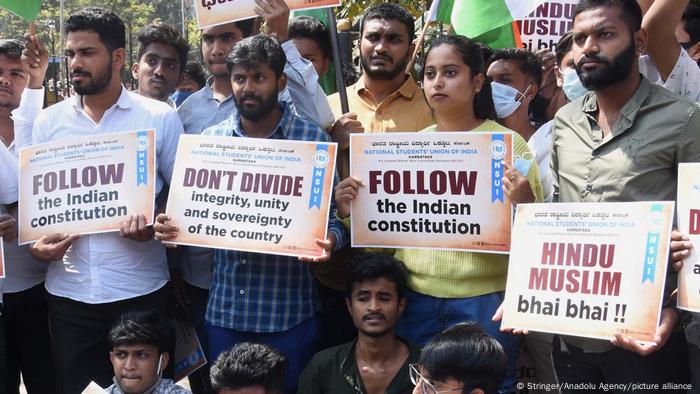Kevin Carmichael - Yesterday
Financial Post

© Provided by Financial Post
Bank of Canada governor Tiff Macklem said the current inflation scare is mostly a supply issue. If he’s right, the central bank’s path back to higher interest rates might not be as steep as some on Bay Street currently think it will be.
The Bank of Canada’s latest economic outlook has year-over-year increases in the consumer price index averaging 5.1 per cent this quarter, well outside policy-makers’ comfort zone of one per cent to three per cent.
Inflation at that pace leaves the central bank with little choice but to raise interest rates. The central bank’s marching orders from the government call on it to keep the consumer price index advancing at an annual rate of about two per cent, the midpoint of that comfort zone. Forecasters at Bank of Nova Scotia predict that will require lifting the benchmark interest rate to two per cent by the end of the year. The rate is currently at an emergency setting of 0.25 per cent, about as close to zero as it can get without unduly disputing financial markets.
Canada’s economy no longer requires emergency stimulus. Employment returned to where it would have been if the COVID recession hadn’t interrupted hiring trends at the end of last year, and gross domestic product is back at pre-pandemic levels. With the economy healed, policy-makers turned their attention to inflation at their latest interest-rate meetings, opting to end a promise to keep borrowing costs near zero until at least the spring. Macklem left little doubt that he and his deputies will raise the benchmark rate on March 2, the next scheduled interest-rate announcement.
“The economy will need higher interest rates to moderate growth in spending and bring demand in line with supply,” Mackelm said in a speech at a conference hosted by the Canadian Chamber of Commerce on Wednesday, Feb. 9. “We also agreed that we must keep inflation expectations well anchored. If inflation expectations become unmoored, the costs of getting inflation back to target will be much higher. For both of these reasons, we signalled with unusual clarity that Canadians should expect a rising path for interest rates.”
Unusual clarity isn’t perfect clarity. Macklem has resisted saying too much about how fast he will raise interest rates, and at what level he might stop. He indicated in a press conference on Jan. 26 that it would be reasonable to expect a quick pace of increases in the beginning, given the benchmark rate is essentially at zero compared with 1.75 per cent at the start of the pandemic. But he warned against thinking that the central bank was on autopilot. He said he and his deputies could choose to take a break as they get closer to two per cent.
Canada loses 200,000 jobs, nearly double the blow economists expected
Tiff Macklem stokes doubts about usefulness of forward guidance
Something Macklem said earlier in his speech could shed some light on how policy-makers are thinking about inflation.
At the start of last year, central bankers insisted that inflation would be temporary, arguing that acute supply shortages would be resolved as soon as clever executives and logistics experts figured out how to navigate supply bottlenecks. That didn’t happen, and by the end of the year, policy-makers such as Macklem conceded they had a problem. The Bank of Canada, the Federal Reserve in the United States, and other central banks all started raising interest rates or advancing plans to do so.
But Macklem hasn’t stopped thinking that inflation is primarily a supply phenomenon. That’s important because higher interest rates can’t do much about inflation that’s being driven by congested ports, Asian factories that close for COVID outbreaks and droughts brought by climate change. Macklem made a point of pushing back against arguments that his policies and fiscal stimulus were the main source of inflation.
“It is not the result of generalized excess demand in the Canadian economy,” Macklem said. “Our economy is only just now getting back to full capacity.”
The Bank of Canada does have influence over demand. Macklem seems to think demand isn’t the issue. If supply gets back to normal, the path to higher interest rates could be flatter.
• Email: kcarmichael@postmedia.com | Twitter: carmichaelkevin

Macklem says increased productivity, business investment, needed to temper inflation
The governor of the Bank of Canada made clear Wednesday that higher interest rates are coming to tamp down on inflation, but said businesses also need to do their part by boosting productivity and easing the supply constrains that are helping to push up prices.
Tiff Macklem, speaking virtually at a Canadian Chamber of Commerce, said it is important businesses invest in worker productivity because it creates economic growth without higher inflation rates.
"Productivity growth is vital to non-inflationary growth and rising standards of living. At a time when inflation is already well above our target, this is more vital than ever."
Worker productivity, which measures how much is produced in a set amount of time, needs to go up so that rising wages don't lead to higher unit costs, he said.
"Higher productivity pays for higher wages," he said.
Speaking on a media call after the event, Macklem said that lower productivity growth would mean less supply expansion, which could mean interest rates would have to go up more.
He emphasized though that higher rates are coming either way, both to dampen demand and to head-off expectations that inflation could be a problem beyond the short-term.
The bank projects inflation will run high at close to five per cent for the first half of the year, but expects it to get down to three per cent by the end of 2022. Expectations that inflation could run higher for longer could makes getting it under control crucial, he said.
The bank ended its commitment to hold interest rates at its floor of 0.25 per cent on Jan. 26, opening a path to raising rates at its next scheduled rate decision is March 2.
Macklem's remarks are the clearest sign yet that rates are set to go up.
"There’s no question that Canadians are seeing inflation on a broader set of goods, and that certainly can start to influence their psyche. That’s why it’s been very important for us to get out and signal very clearly that we are not comfortable with where inflation is.
"Inflation is too high and we will be bringing it down.”
Desjardins analyst Royce Mendes said in a note that the governor's unequivocal statement that the economy requires a significant shift in monetary policy means an increase should be expected in the near-term.
"This signal all but clears the way for a rate hike in March, despite the labour market’s slide in January."
How much and how quickly rates rise from there will depend on a variety of factors, but Macklem made it clear that business investment is one of them.
He noted that Canada has long lagged the U.S. in business investment, including in information and communication technology that plays an important role in driving productivity growth.
There are signs of increased spending on the way though. The Bank's most recent business outlook survey showed 62 per cent of firms plan to spend more on machinery and equipment in the year ahead than last year, the highest level since the survey was introduced in 1999.
Indications are that business investment will grow faster in Canada than in the U.S., as long as businesses actually go ahead with that spending, said Macklem.
"It’s imperative that businesses in Canada follow through on these plans or risk losing out to U.S. competitors."
He says businesses will also need to lean into the flexible and remote working arrangements created by the pandemic to allow access to a wider labour pool, while workers will also need to be prepared to keep their skills fresh.
This report by The Canadian Press was first published Feb. 9, 2022.
Ian Bickis, The Canadian Press

Bank of Canada: Economy needs more capacity investment, not stimulus
OTTAWA (Reuters) -Canada's economy does not need more stimulus, but rather more investment from both government and businesses to build up supply capacity to meet strong consumer demand, Bank of Canada Governor Tiff Macklem said on Wednesday.
Macklem, when asked in an audience Q&A session if government should be spending to further stimulate the economy, said Canada is already in the midst of a consumer-led recovery, and more capacity investment is needed to sustain that.
"To sustain a strong consumer-led recovery, you need investment," he said. "Whether it's businesses or governments, what we need is more focus on building that supply capacity."
"Demand is now looking self-sustaining," he added.
Canadian Prime Minister Justin Trudeau during his election campaign last year pledged C$78 billion https://www.reuters.com/article/us-canada-election-idCAKBN2FX3M7 ($62 billion) in new spending over five years to foster Canada's economic rebound.

© Reuters/BLAIR GABLEFILE PHOTO: Bank of Canada Governor Tiff Macklem speaks during a news conference in Ottawa
Macklem said that with inflation well above the central bank's 2% target, productivity growth was more vital than ever. Businesses can help increase productivity by investing in new technology to boost efficiency, he said.
"For the economy as a whole, investment is critical to non-inflationary growth," he said
If Canadian businesses fail to go ahead with planned investments, it could impact the path of rate increases, he later told reporters.
"If productivity growth is weaker, that means we're going to have less growth in potential output in the economy, less expansion of our supply capacity and, other things equal, that means that interest rates would have to go up more," he said.
PRODUCTIVITY LAGS
Despite a stronger rebound in employment than seen in the United States, Canada's productivity growth continues to lag. This is both due to more public health restrictions and lower business investment, said Macklem.
"The question is, does COVID-19 provide us with an opportunity to change our course? I believe it does," said Macklem, pointing to the pandemic-driven rise in digital investments and remote work.
Corporate balance sheets are strong, consumer demand is high and U.S. demand for Canadian exports is rising, with investment intentions among firms at their highest level since 1999, Macklem said.
The central bank signaled last month it would soon start hiking rates https://www.reuters.com/business/finance/hike-or-not-its-toss-up-ahead-bank-canada-rate-decision-2022-01-26, saying the economy no longer needed pandemic-level supports. Money markets see the first increase in March, with six in total this year. [BOC WATCH]
The Canadian dollar was trading 0.3% higher at 1.2670 to the greenback, or 78.93 U.S. cents.
($1 = 1.2669 Canadian dollars)
(Reporting by Julie Gordon and David Ljunggren in Ottawa; Additional reporting by Fergal Smith in Toronto; Editing by Alex Richardson, Kirsten Donovan and Mark Porter)

















